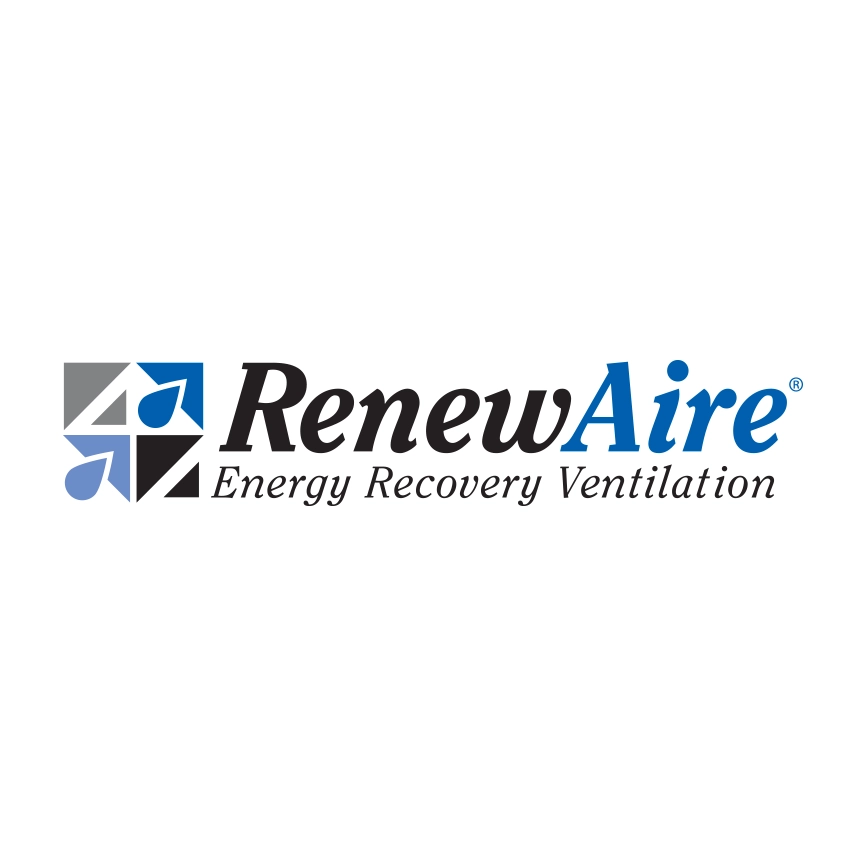ERVs: Revolutionizing the Home Ventilation Industry
“IAQ IQ: Indoor Air Quality and You” podcast, host Tyler Kern chatted with Nick Agopian, the Vice President of Sales and Marketing at RenewAire LLC, and Brian Simmons, RenewAire Senior Technical Sales Support Specialist, regarding ERVs and home ventilation.
They discussed:
- Purpose of ventilation
- ERVs and why we need them in the HVAC industry
- The importance of codes in HVAC
Previously, providing healthy and efficient ventilation was not the priority of the home building industry. Therefore, air quality in residential spaces lagged in comparison to commercial spaces. The energy crisis of the 1970s and 80s highlighted this gap in residential ventilation.
Traditional homes were poorly insulated and prone to leaky airways, which increased the energy consumption for heating and cooling systems to optimize the air quality within the space. Energy recovery ventilation has emerged as a technology that allows contractors and home builders to provide increased ventilation without increasing energy use.
“Energy recovery ventilation offers balanced ventilation in the home,” noted Agopian. All homes must be properly ventilated, most times by opening adjacent windows. However, in periods of extreme temperatures, this may be impossible. ERV removes one cubic foot of stale or contaminated air within the internal environment. It recovers the energy within the air and uses it temporarily to purify another cubic foot of outdoor air to replace the contaminated air. Therefore, ERV is a cost-effective solution that offers balanced ventilation within a closed system.
The HVAC industry is regulated by codes, which are in place to ensure customers get the minimum amount of quality and design advocated as the standard required by law. For contractors and home builders, providing the bare minimum amount of ventilation required by law is hardly ideal. In a post-pandemic society, more homeowners are more conscious of the air they breathe and are asking for a higher standard of indoor air quality. As Agopian asserts, there is a need to rewrite the standards to upgrade the codes such that the goal of balanced ventilation can be achieved.”
Another reason why it might be time to re-evaluate the current ventilation code is that the standard for commercial buildings is different from residential buildings. For a time, home ventilation was an afterthought within the industry. According to Simmons, “ERVs are a long-term investment, an upgrade from the usual ‘minimum’—air is clean while heating and cooling are conserved.” This is due to the difference in the intensity of the populace and activities within the space. Previously, experts thought the bathroom was the primary source of air contamination in the home. However, activities in the kitchen are the primary source of pollution—gas stoves generate an unsafe level of air pollution.
Since we have established the fact that the major source of pollution in the house is mostly the kitchen, we need to take care of our environment. Whatever air is in such places is what we breathe in. Good ventilation doesn’t cost so much, at least anything for good health.
HVAC specialists must take it upon themselves to educate contractors on the importance of ERVs. These contractors need to evolve and accept the new technology so they can offer it to the customers.
Finally, ERVs can be put in new and existing buildings. Installing ERVs is straightforward and can be done by HVAC companies. Maintaining an ERV is pretty easy. Here are some tips to maintain an ERV:
- Avoid putting oil into it
- Check the outside vents to remove any trapped dirt
- Check and replace the filters on the inside vents




